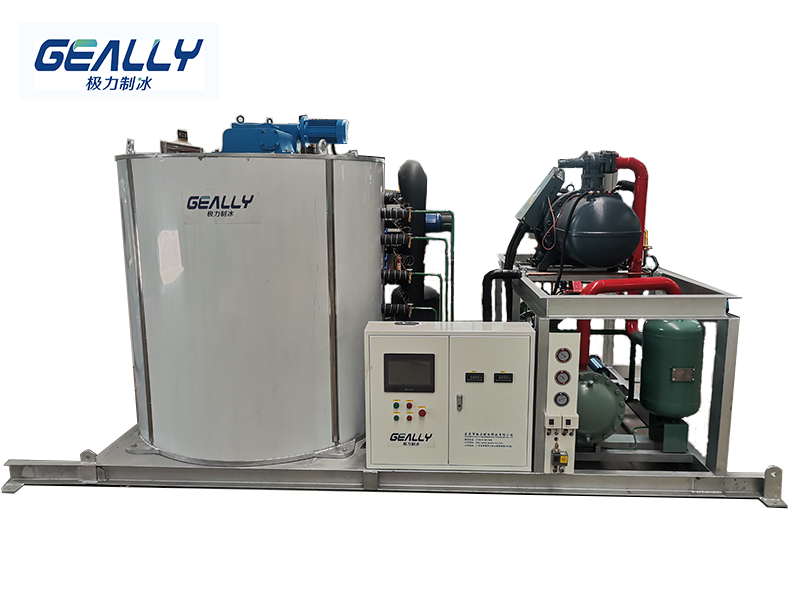What is the basic composition of the chiller refrigeration system?
1. Compressor
2. Condenser: During the refrigeration process, the condenser plays the role of outputting heat energy and condensing the refrigerant. After the high-pressure superheated vapor discharged from the refrigeration compressor enters the condenser, all the heat it absorbs during the working process, including the heat absorbed from the evaporator and the refrigeration compressor and in the pipeline, is transferred to the nearby medium (water or Air) is taken away; the high-pressure superheated vapor of the refrigerant is re-condensed into a liquid. (According to the different cooling media and cooling methods, condensers can be divided into three categories: water-cooled condensers, air-cooled condensers, and evaporative condensers.)
3. Liquid accumulator: The liquid accumulator is installed after the condenser and is directly connected to the drain pipe of the condenser. The refrigerant liquid of the condenser should flow into the liquid receiver unimpeded, so that the cooling area of the condenser can be fully utilized. On the other hand, when the heat load of the evaporator changes, the demand of the refrigerant liquid also changes accordingly, and then the accumulator plays the role of adjusting and storing the refrigerant. For the small chiller refrigeration system, the liquid receiver is often not installed, but the condenser is used to adjust and store the refrigerant.

4. Filter drier: In the refrigeration cycle of the chiller, it is necessary to prevent the entry of moisture and dirt (oil, iron filings, copper filings), etc. The source of moisture is mainly the trace moisture contained in the newly added refrigerant and lubricating oil. Or moisture due to air ingress when testing the system. If the water in the system is not removed, when the refrigerant passes through the throttle valve (thermal expansion valve or capillary), the water will sometimes freeze into ice due to the drop in pressure and temperature, which will block the channel and affect the normal operation of the refrigeration device. Therefore, a filter drier must be installed in the chiller refrigeration system.
5. Thermal expansion valve: The thermal expansion valve is not only a flow control valve in the chiller refrigeration system, but also a throttle valve in the refrigeration equipment. It is installed between the drying filter and the evaporator in the refrigeration equipment. The bulb is wrapped at the outlet of the evaporator. Its main function is to throttle and depressurize the high-pressure and normal-temperature refrigerant liquid when it flows through the thermal expansion valve, and turn it into a low-temperature and low-pressure refrigerant wet vapor (mostly liquid, a small part is steam) into the evaporator, and vaporized in the evaporator. Absorb heat to achieve the purpose of cooling and cooling.
6. Evaporator: The evaporator is a heat exchange device that relies on the evaporation (actually boiling) of the refrigerant liquid to absorb the heat of the cooled medium. Its function in the refrigeration system is to absorb heat (or output cold). In order to ensure that the evaporation process can be carried out without interruption and long-term, it is necessary to continuously pump the evaporated gas with a refrigeration compressor to maintain a certain evaporation pressure.
7. Refrigerant: Most industrial chillers used in modern industries use R22 or R12 as refrigerant. Refrigerant is the active working medium in the refrigeration system, its main function is to carry heat, and to achieve heat absorption and heat release when the state changes.